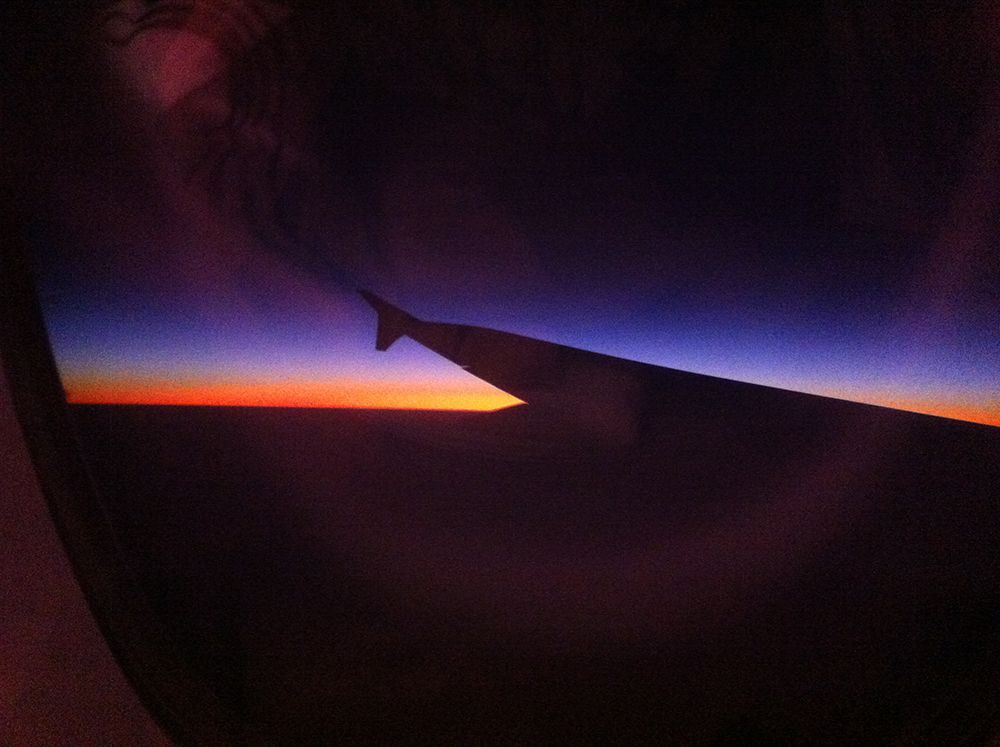On her way to Peru, honors biology major Kaitlyn Akel looks out the airplane window and finds unexpected visions in the city lights stretching out below. Kaitlyn is one of 16 honors students taking part in Honors Passport: Peru, a new study-at-home-and-abroad experience offered by the Honors College.
When I fly, I always, always hope for a window seat, if it’s not guaranteed. Luckily, when booking the flights to Peru, the agent asked my preference and without hesitation, I said “window.”
And I understand those who prefer the aisle seats, as they are more accessible. You can get out and amble around the cabin without tripping over the potentially complete stranger next to you, thus avoiding an awkward interaction. It’s easier when there’s a friend next to you though.
But as I sit here in my cramped, but completely wanted corner, I’ve never felt so confident in my stance on airplane seats. In fact, I’d argue that in a window seat, your world is much, much wider, and therefore infinitely better.
This is my first night flight in a while, and when I’m on one, I like to play this game where I make shapes out of the city lights below. Tonight, the more I shove my face against that window, the more I feel as though I’m floating through space. If I forget where I am and just take what is below me at face value, the small towns and cities become star clusters and galaxies that swirl through the sea of black, each of its own individual shape and luminous intensity.
I passed a city that looked exactly like a nerve cell, with a dark circular center as the nucleus, and I wondered what that spot could have been in reality. Some hill, maybe, or a park? The lights continued to stretch out of the cell body into sensory dendrites, and there was a linear trail of lights exiting the city that to me was the cell’s axon, but in reality, most likely a road system.
I could tell when we approached the coastlines of Honduras, because it was a sea of nothing that hugged the ember-colored grid system of the city.
I saw a city that looked like a bird in flight, with what looked like black spaces between each spread wing. Was this intentional? I’m not sure what city it was, though it was somewhere in the Yucatan. I recall that when Cuzco was first settled and built, it was shaped like a puma, so it’s definitely plausible.
Thus far, Managua, Nicaragua is the largest city I’ve seen on this flight. It stretches out so that I can no longer see it underneath the plane. It’s a cluster of islands where the metropolis is the largest, and well-lit roads connect it to each subsequent and smaller part of the city.
In the back of my mind, I wonder of the stories and rich histories each city has to offer. I think of the political strife that struck countless civilians throughout the centuries and the revolutionaries who aimed to mediate their plight in their own strange ways and ideas. I’m curious as to where these cities and countries are at in their progress now, and what vestiges of struggle still exist. How has industrialization affected these communities, or democracy (or lack thereof) or technology?
I think this is what I am the most intrigued about searching for while in Peru: looking for these vestiges, and wondering how I can contextualize them with what I’ve learned in class, if applicable.
The stars have become the ocean. Save for the plane lights, we are enveloped in complete darkness. Not a galaxy in sight.
And if I had an aisle seat, this would have been a much different story.

